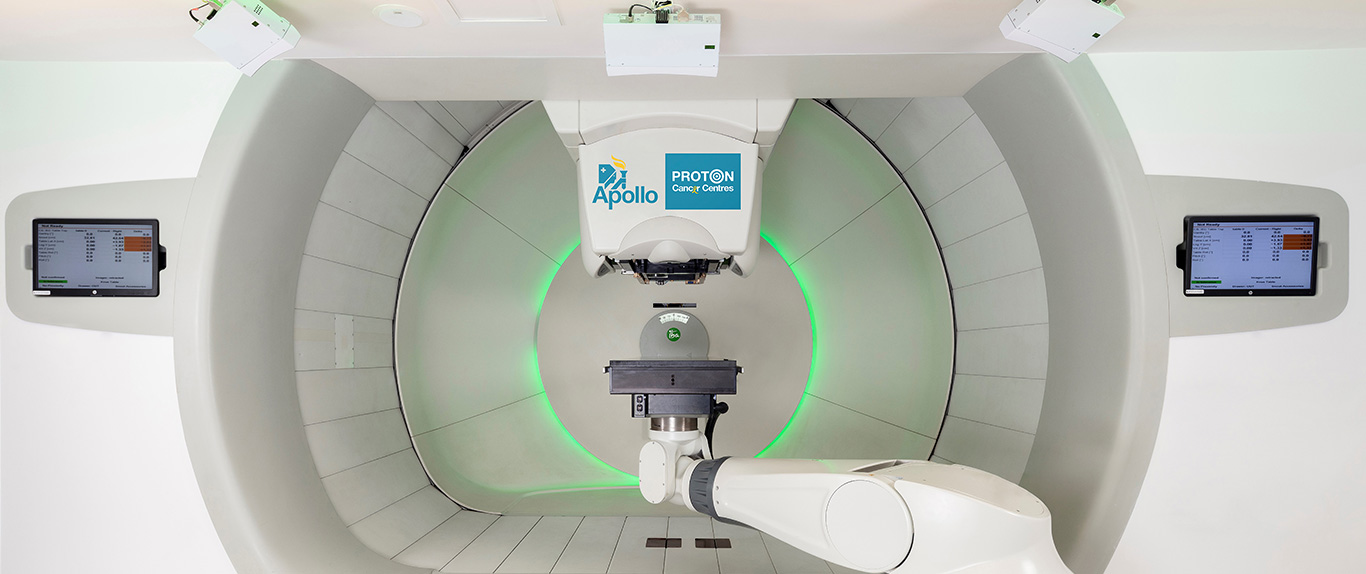The advancements of proton technology as a treatment option for cancer began
in the 1940s. The idea of using protons in medical treatment was first
suggested in 1946 by physicist Robert R. Wilson, Ph.D. The first attempts to
use proton radiation to treat patients began in the 1950s in nuclear physics
research facilities, but applications were limited to a few areas of the
body. In the late 1970s, imaging advancements coupled with the development
of sophisticated computers and improved accelerator and treatment delivery
technology made proton therapy more viable for routine medical applications,
such as cancer treatment.
Only in recent years has it become possible to develop proton beam facilities
in conjunction with established medical centres. Initially, proton therapy
machines were designed so that a narrow beam of protons that emerges from
the nozzle was then widened (scattered) and shaped to conform to the shape
of the tumour, by custom-made accessories (collimators and compensators)
which had to be mounted on the nozzle. This was called passively scattered
proton therapy (PSPT). Earlier machines also had only X-rays placed
perpendicular to each other to provide image guidance and so only bony
anatomy could really be verified.
In addition, most of the older machines were fixed and the patient had to be
rotated or positioned differently so that the beam could be directed to the
tumour through various angles. However, this has now given way to Pencil
Beam Scanning proton therapy (PBSPT) which is much more versatile and avoids
the cumbersome and labor-intensive accessories required to deliver
treatments. Also, the use of onboard image guidance and rotational gantries
has made the delivery of proton therapy much more streamlined and
comfortable to the patient and therapist. This has in turn made proton
therapy accessible to many more people around the world.
FOR APPOINTMENT







